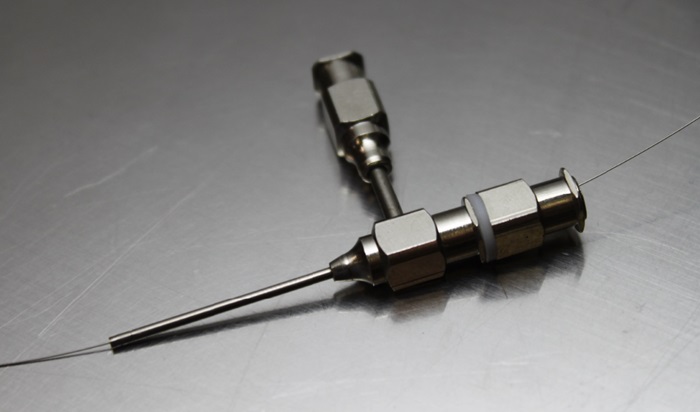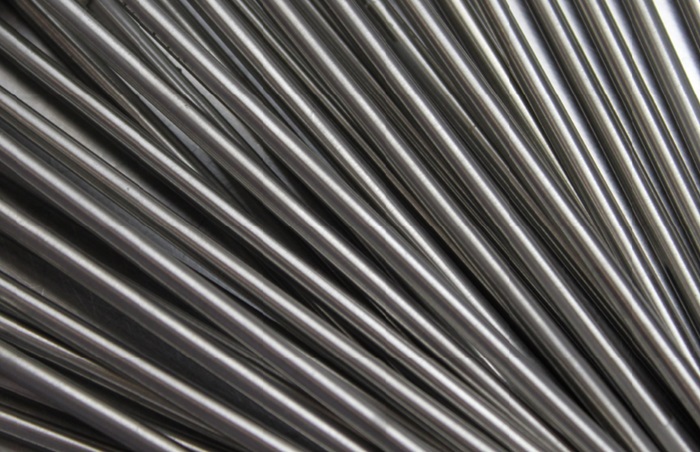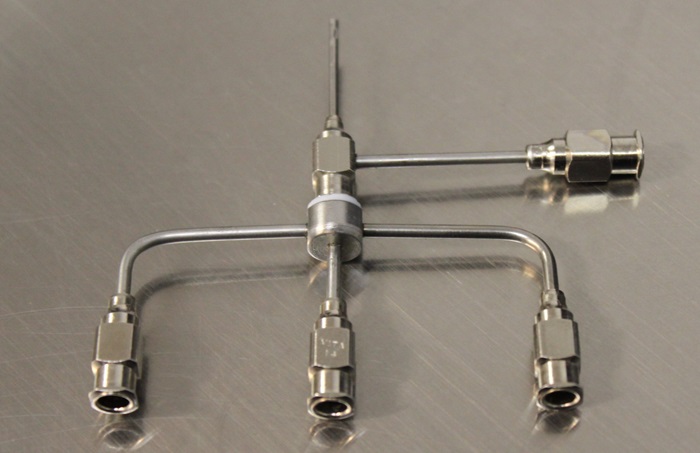|
Visit our website at
www.customspinnerets.com
|
|
Tips for Achieving Consistent Fiber Production |
|
ramé-hart Prebuilt and Custom Coaxial Needles (as well as triaxial and quadaxial needles) are used for a variety of electrospinning, electrospraying, and bioprinting applications. These are highly specialized processes where the quality and consistency of fiber production are paramount. When using complex spinneret designs, maintaining both consistent fiber production and needle integrity becomes even more critical. Here are some tips to help you optimize your setup and ensure reliable outcomes: 1. Optimize Material Selection for Viscosity and Surface Tension: The inner and outer fluids in coaxial, triaxial, or quadaxial setups should have compatible viscosities and surface tensions. Disparities can lead to unstable jets, clogging, or uneven fiber formation. You can measure the surface tension using any ramé-hart goniometer / tensiometer. 2. Solvent Compatibility: Ensure that the solvents used in the solutions are mutually compatible and don’t cause phase separation or precipitation at the interface. Solvent incompatibility can lead to needle blockages and inconsistent fiber diameters. 3. Fine-Tune Flow Rates: For coaxial or multiaxial electrospinning, it's crucial to carefully balance the flow rates of each fluid. The core and sheath fluids (or additional layers) must be delivered at rates that allow them to remain concentric without causing excessive pressure buildup, which could lead to clogging or needle deformation. 4. Flow Rate Monitoring: Implement real-time monitoring systems to detect fluctuations in flow rates. Even minor inconsistencies can result in variations in fiber morphology, affecting the uniformity of the final product. 3. Maintain Precise Voltage Control Voltage Stability: Ensure that the applied voltage is stable and properly calibrated for the specific materials and needle configuration. Instability in the electric field can cause disruptions in fiber formation, leading to inconsistencies. For multiaxial needles, the electric field must be optimized to ensure the stable formation of Taylor cones at each layer. Adjust the distance between the needle tip and the collector to accommodate the increased complexity of the fluid dynamics. 4. Implement Rigorous Cleaning Protocols: Multiaxial needles, especially those with small orifices, are prone to clogging. Regular cleaning using solvents compatible with the materials being used is essential to prevent buildup that could impede fluid flow. ramé-hart offers cleaning wire kits and precision needle files for cleaning. All ramé-hart spinnerets can be taken apart for thorough cleaning. You will need a needle disassembly wrench. And here are the disassembly instructions for the coaxial needle. For more thorough cleaning, consider using ultrasonic baths to remove stubborn residues that could be trapped in the narrow channels of coaxial, triaxial, or quadaxial needles. ramé-hart offers a compact ultrasonic cleaner which is optimal for cleaning any ramé-hart spinneret.
5. Demand High-Quality Materials: The materials used to manufacture the needles should be of high quality, with smooth internal surfaces to minimize the risk of clogging and ensure consistent flow. All ramé-hart spinnerets are fabricated using Type 304 stainless steel tubing, an austenitic material known for its excellent corrosion resistance and high ductility. The tubing is polished using a precision electrochemical process on both the inside and the outside resulting in optimized smoothness and improved corrosion resistance. The needle tips are ground flush and then also polished. The needle’s geometry must be manufactured with high precision to maintain concentricity between layers. Misalignment can cause asymmetrical fiber production and reduce the integrity of the final fibers. ramé-hart uses a proprietary centering method that ensure excellent concentricity for all multiaxial spinnerets.
6. Monitor and Control Environmental Conditions: Environmental factors like temperature and humidity can significantly affect fiber production. High humidity can lead to solvent condensation and disrupt the jet, while temperature fluctuations can affect the viscosity of the fluids. Use a controlled environment, such as a cleanroom or a chamber with regulated temperature and humidity, to ensure consistent fiber formation. 7. Implement Real-Time In-Line Monitoring: Use in-line monitoring techniques such as optical microscopy or laser diffraction to observe the jet formation and fiber deposition in real time. This allows for immediate adjustments to parameters if inconsistencies are detected. Record data on flow rates, voltage, temperature, and other critical parameters during each run. Analyzing this data can help identify trends or issues that might impact consistency and needle integrity. 8. Regularly Inspect and Maintain Needles: Regularly inspect needles for signs of wear, deformation, or buildup. Even minor damage can have significant effects on fiber production. Implement a preventive maintenance schedule that includes routine checks and timely replacement of worn or damaged spinnerets and other components to avoid unexpected failures during production. 9. Customize and Test Spinneret Designs: For complex applications, custom-designed spinnerets may be required to achieve optimal performance. ramé-hart is the world leader in custom spinneret production and uses a time-worn worksheet that has been polished and optimized over more than a decade of daily use. And if you require something special that does not conform to the worksheet, ramé-hart can still make it. See dozens of examples of special order spinnerets here. Experiment with different configurations and materials to find the best match for your specific needs. ramé-hart can help in this regard. For example, it's possible to order a ramé-hart coaxial needle that has more than one inner needle component. Additional inner needles can be different lengths (which affects DIM C on the worksheet) or different gauges. Before committing to large-scale production, prototype and thoroughly test spinneret designs to ensure they meet the required specifications and can maintain consistent performance over time.
10. Ensure Proper Training and Protocol Adherence: Ensure that all operators are thoroughly trained in the correct setup, operation, and maintenance of coaxial, triaxial, and quadaxial electrospinning equipment. Human error can be a significant factor in inconsistent fiber production. Develop and enforce strict SOPs that cover every aspect of the electrospinning process, from setup to cleaning, to ensure uniformity across production runs. Achieving consistent fiber production and maintaining needle integrity in electrospinning and bioprinting requires a meticulous approach to every aspect of the process. From spinneret design and material selection to environmental control, each factor plays a crucial role in the overall success of your operation. By following these tips and continuously monitoring and adjusting your processes, you can optimize your setup for reliable and high-quality fiber production. |
|
Coupon Savings |
If you made it this far, you deserve free
shipping on your next spinneret order. Simply use the coupon below
before the end of the year at
https://www.ramehart.us/coaxial-needles/.
 |
|
Regards,
Carl Clegg |



